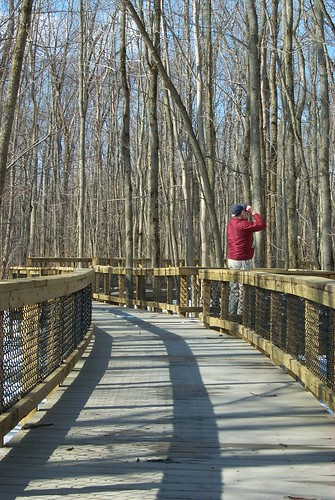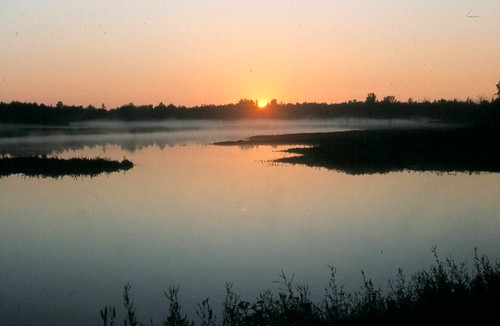The Iroquois National Wildlife Refuge
Wildlife of the Iroquois National Wildlife Refuge
Birds and Migratory Birds
Being on a major path of bird migrations, the wildlife refuge experiences a sizable amount of species of birds in the area. The path is known as the Atlantic flyway. Around two hundred and sixty-six species of birds have been spotted at the wildlife refuge. Sixty of which stay there all year round. As for geese that seasonally nest on the refuge, only around two hundred pairs of geese stay on the 'stop' that is the Iroquois NWR. While the rest continue on to nesting areas in Canada. The heights of migration are from the middle of March to the beginning of April. In the autumn season, the migrations occur from the middle of September until early October. Other birds that migrate to the area are sandpipers, killdeer, and various other shorebirds. They arrive (in their highest numbers) during and between the months of May to August. Birds of prey are also known to frequent the area of the refuge during migrations or stay year round. The most common birds of prey being the American Kestrel and the Red-tailed hawk. Though Ospreys and Bald eagles are also present at the refuge.
Fish and Mollusks
The species of fish in the waters of the refuge provide a food source for the other wildlife. These species of fish include bass, bullhead, yellow perch, sunfish, black crappie, northern pike and the invasive carp. Mollusk species, mussels, and clams, are also found in the waters of the refuge
Mammals
The environment and diversity of the Iroquois NWR allows it to support a wide range of mammals. The wildlife is present in both the wetlands and other areas of the refuge. Many of the mammals are known to inhabit Western New York are present in the refuge. This includes the many well-known animals. Including muskrats, red foxes, gray squirrels, white-tailed deer and eastern cottontail rabbits. River otters and coyotes have sometimes been spotted at the refuge.
Amphibians and Reptiles
The most visible reptiles at the refuge are snapping turtles and the midland painted turtles. On warm and sunny days you can find the painted turtles resting out in the sun for warmth. You'll also find snapping turtles around the refuge looking for areas in which to lay their eggs. As for snakes, there are the more commonly sighted water snakes and garter snakes. Lesser-seen snakes on the refuge are the smooth green snakes, the black rat snake, the northern redbelly snake, the eastern milk snake and the northern brown snake. None of these snakes are venomous.
You can also find many amphibians at the Iroquois NWR. They live in the forest and wetlands of the refuge. Species of frogs and toads include the northern leopard frog, green frogs, gray tree frogs, American toads, the western chorus frog, and spring peepers. In the spring, you can hear the songs of the frogs all throughout the season. Salamanders on the refuge include Jefferson and blue-spotted salamanders.

Activities and Trails on the Refuge
There are plenty of recreational and educational activities on the Iroquois National Wildlife Refuge. There is a visitor's center on Casey Road that provides education about the local wildlife and information. Within the visitor center is a nature store providing apparel, nature books, and more items available for sale.
Trails:
Feeder Road - Originally, Feeder Road was constructed in 1823, using material from the digging of the Feeder Canal. The canal's purpose was to direct water from Tonawanda Creek, into Oak Orchard Creek. From there it went to the Erie Canal. Feeder Road goes through woods, grasslands, and wetland.
Kanyoo Nature Trail - Kanyoo takes you through the forest and wetlands. On the boardwalk, there's an observation area that provides excellent views of the marshland. During the spring and summer, wildflowers and other colorful, natural sights are everywhere
Onondaga Natural Trail - The Onondaga takes visitors over the Onondaga marsh, through the woods, and over plantations areas. These plantations were initially created by the Seneca. Long before the wildlife refuge existed they used some of the area for farming. All throughout the trail, you'll spot birds and other wild animals.
Swallow Hollow Nature Trail - Somewhat similar to the Kanyoo Nature Trail, a boardwalk will take you through marshland. The trail also goes through wetland and the wooded areas. In spring and into summer plenty of songbirds, such as the Warbler, are found along this trail. Panels along this trail also provide information about wildlife that you can expect to spot.
Overlooks on the Refuge
Cayuga Marsh Overlook - From this overlook, you'll be able to watch bald eagles in their nest. You'll also spot various other wildlife, including waterfowl and black tern. It's best to bring a pair of binoculars with you for best viewing.
Mallard Overlook - At this overlook, you can view Ringneck Marsh (south-east view) and possibly spot an osprey nest. Great blue heron and waterfowl are also visible here.
Ringneck Marsh Overlook - Ringneck Marsh is visible from the a northern 'perspective'. This is the best overlook for viewing migrating geese.
Schoolhouse Marsh Overlook - Here you'll be able to see waterfowl and it's where you can get the best sightings of shorebirds.




